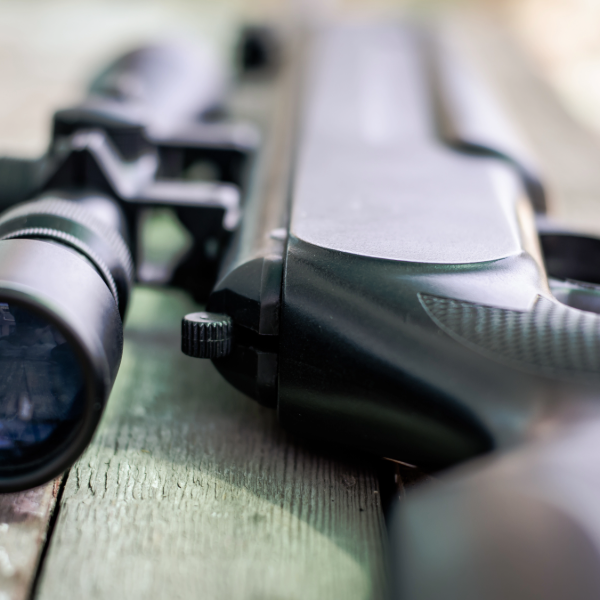The Complete Guide to Airguns: Types, Uses, and Tips for Choosing the Right One:

Airguns have become increasingly popular among shooting enthusiasts for their versatility, affordability, and precision. Whether you’re a seasoned shooter or a beginner exploring this exciting world, understanding the different types of airguns and their uses is essential. In this guide, we’ll dive deep into everything you need to know about airguns, from the various types available to practical tips for selecting the perfect model for your needs.
What Exactly Are They?:
They are a type of firearm that uses compressed air or gas to propel a projectile, typically a pellet or BB. Unlike traditional firearms that rely on gunpowder, they use air pressure to shoot their projectiles, making them quieter, more affordable, and easier to maintain. This makes them a great choice for a variety of activities, including target shooting, pest control, and even small game hunting.
Types of Airguns:
There are several types of available, each designed for specific purposes and shooting styles. Here’s an overview of the most common types:
- Spring-Piston: Spring-piston guns are one of the most popular and affordable types of airguns. They use a coiled spring and piston mechanism to compress air and propel the pellet. These airguns are ideal for beginners because they are easy to use and don’t require additional equipment like CO2 cartridges or air tanks.
- CO2: CO2 guns use carbon dioxide cartridges to propel the projectile. These guns offer semi-automatic firing, making them a favorite for rapid shooting and target practice. One thing to keep in mind with CO2 models is that they can be affected by temperature, as colder conditions may reduce their power output.
- Pre-Charged Pneumatic (PCP): PCP guns are high-powered models that use compressed air stored in a tank. These airguns are known for their superior accuracy, consistency, and minimal recoil, making them a top choice for experienced shooters and hunters. While they provide outstanding performance, they do require air pumps or tanks for recharging.
- Break-Barrel: Break-barrel guns operate by “breaking” the barrel open to cock the spring or gas ram mechanism. These models are simple to use and are widely available in different power levels. They are popular for both target shooting and pest control due to their reliability and ease of maintenance.
Uses of Airguns:
Airguns are highly versatile and can be used for a range of activities. Here are some of the most common uses for guns:
- Target Shooting: One of the most popular and fun uses for these, is target shooting. Due to their accuracy and affordability, they are an excellent option for both casual plinking and competitive shooting. Whether in your backyard or at a shooting range, airguns provide a quiet and controlled environment for honing your skills.
- Pest Control: They are frequently used for pest control, especially in situations where traditional firearms would be impractical or too loud. All types of these are effective for dealing with small pests such as rodents, birds, and other unwanted critters around your property.
- Small Game Hunting: For hunters, these guns can be a useful tool for small game hunting. With the right model and sufficient power, airguns can humanely take down small animals like rabbits, squirrels, and birds.
How to Choose the Right One:
With so many options available, choosing the right airgun can feel overwhelming. Here are a few important factors to consider when selecting the best model for your needs:
- Purpose: First, think about how you plan to use your airgun. If you’re mainly interested in target shooting, a spring-piston or CO2 model might be perfect. However, if you’re looking for something more powerful for hunting, a PCP airgun may be the better option.
- Power and Caliber: Airguns come in different calibers, with .177 and .22 being the most common. A .177 caliber is great for target shooting due to its flatter trajectory, while a .22 caliber offers more stopping power for hunting. Consider the power level and caliber based on your specific needs.
- Budget: Airguns come in a wide range of prices, from affordable spring-piston models to high-end PCP rifles. Set a budget before you start shopping and look for models that provide the best value within your price range.
- Maintenance: Some airguns, like CO2 models, require regular cartridge replacement, while others, like spring-piston airguns, are largely self-contained. Consider how much maintenance you’re willing to perform when choosing an airgun.
Safety Tips:
While airguns are generally safer than traditional firearms, it’s still important to follow safety guidelines to prevent accidents. Here are a few key safety tips:
- Always treat an airgun as if it’s loaded.
- Never point an airgun at anything you do not intend to shoot.
- Use proper eye and ear protection when shooting.
- Store airguns in a secure place, out of reach of children.
- Follow all local laws and regulations regarding the use of airguns.
Conclusion:
Airguns offer a fun, practical, and affordable way to enjoy shooting, whether you’re target practicing, controlling pests, or hunting small game. By understanding the different types of airguns and their specific uses, you can make an informed decision when it comes to purchasing the right model. Remember to consider your needs, budget, and maintenance preferences when choosing, and always prioritize safety when using your airgun.
Explore more on our blog for detailed product reviews, in-depth guides, and expert tips to help you get the most out of your shooting experience!
